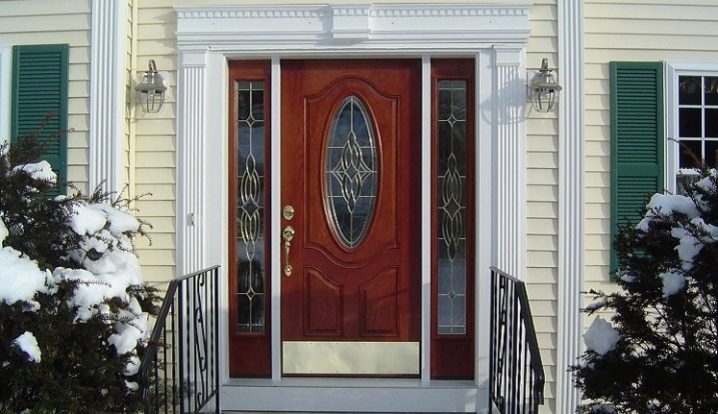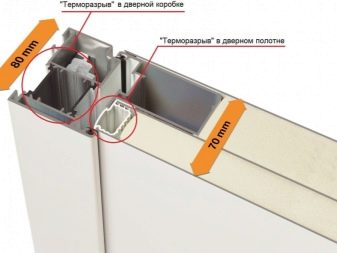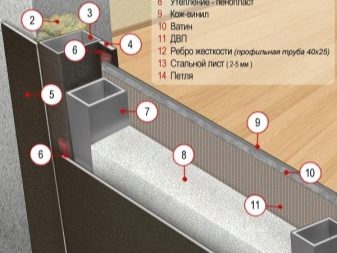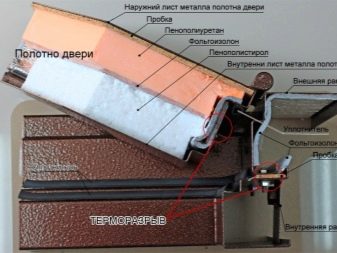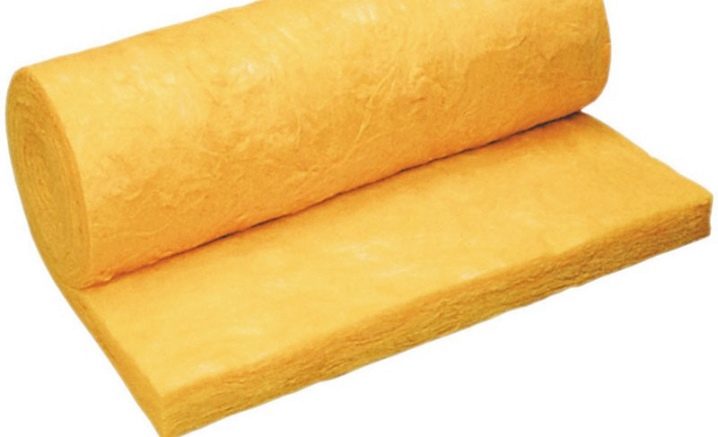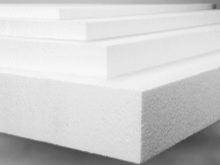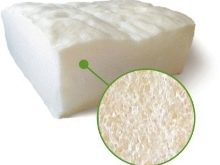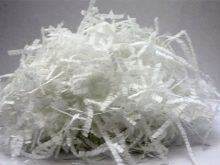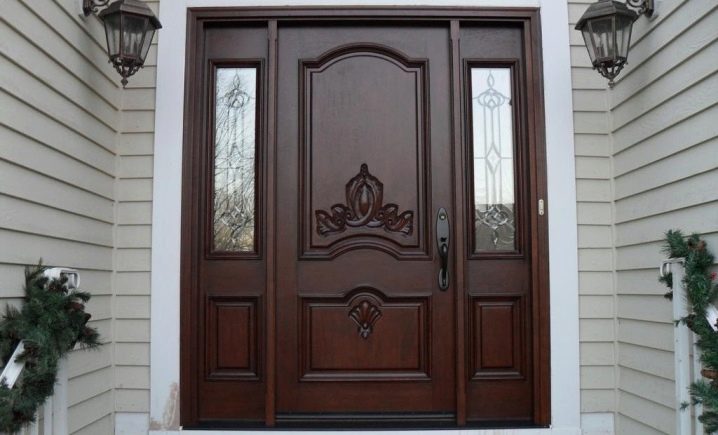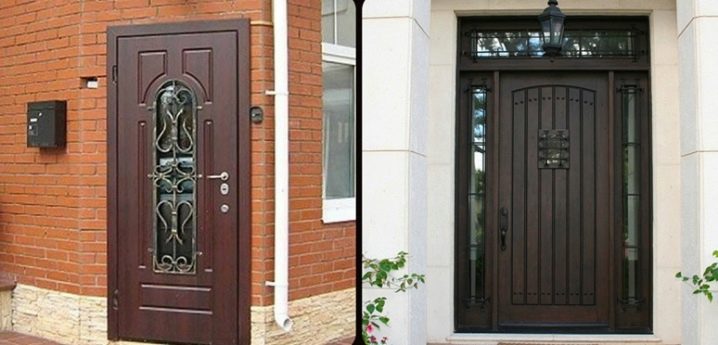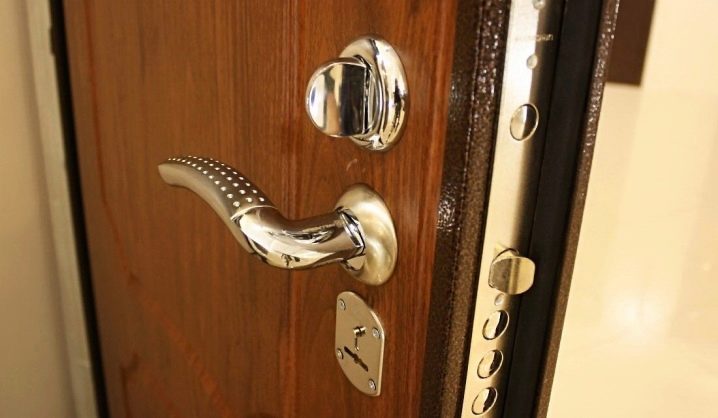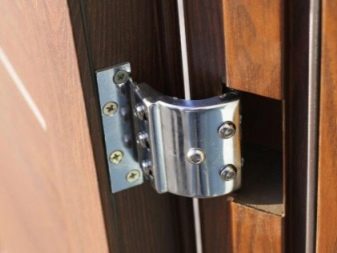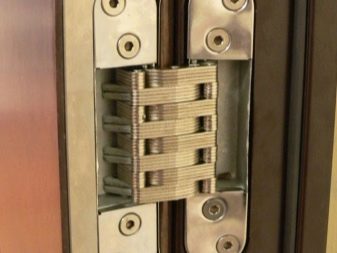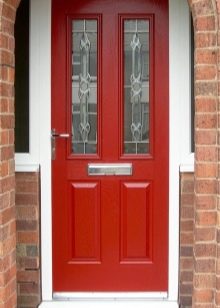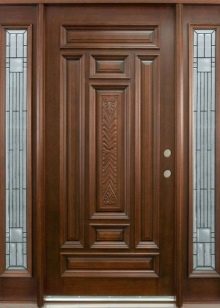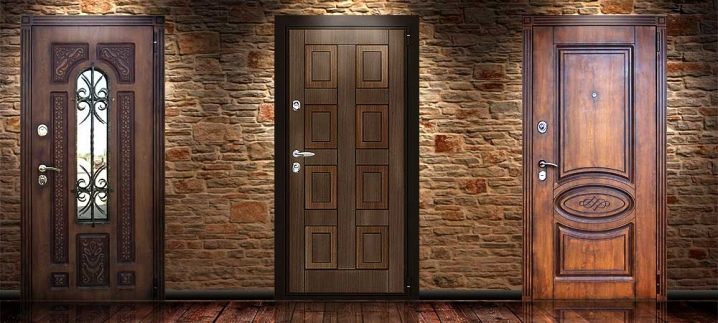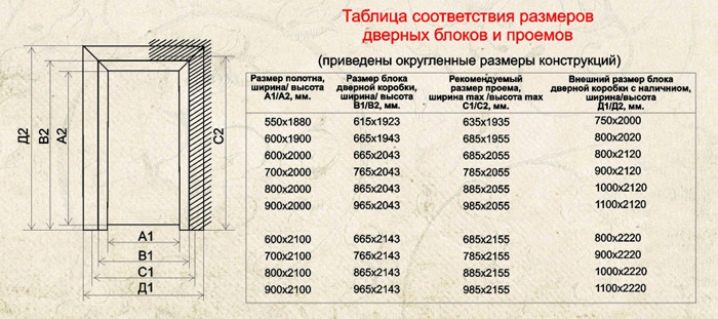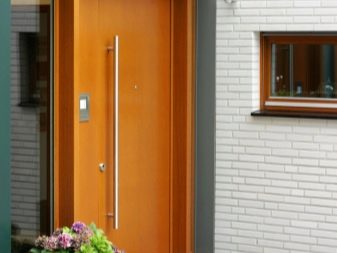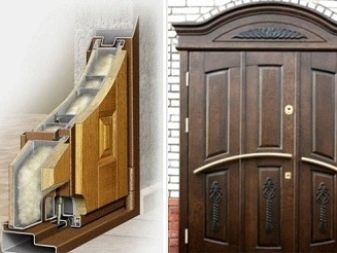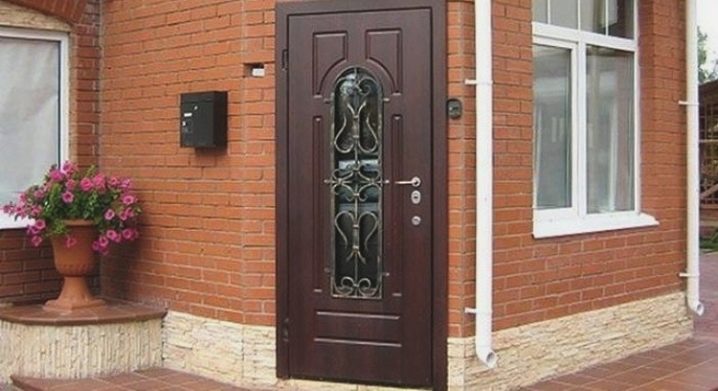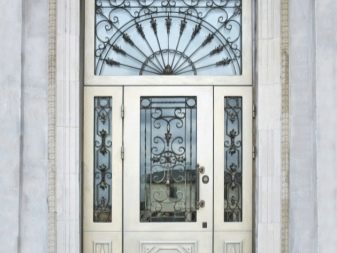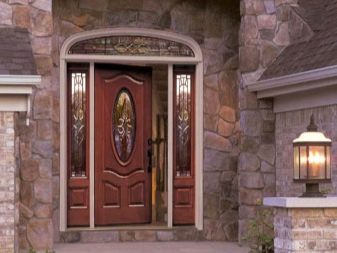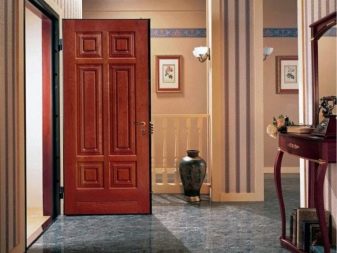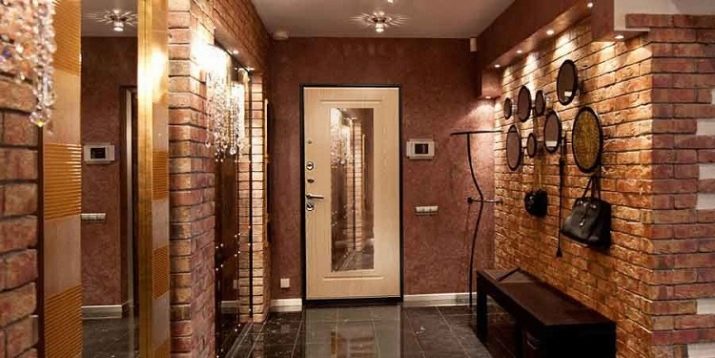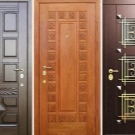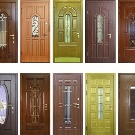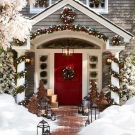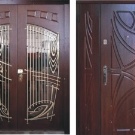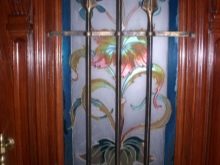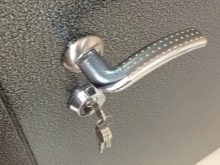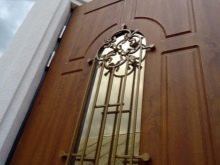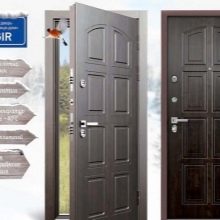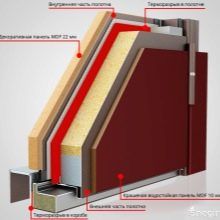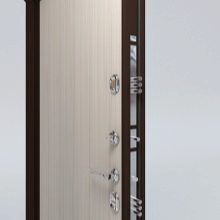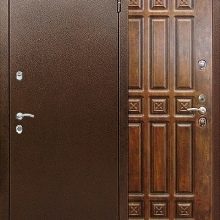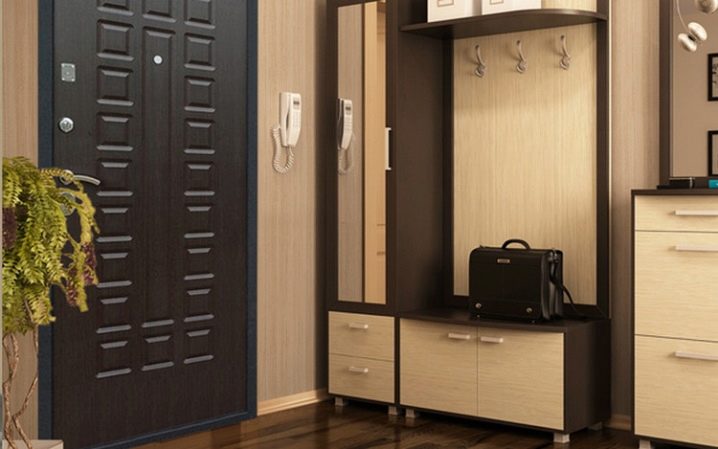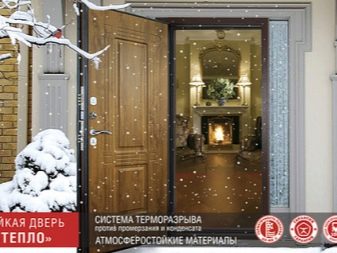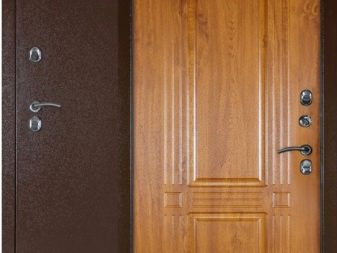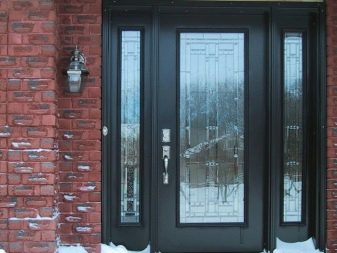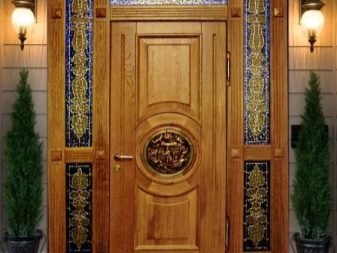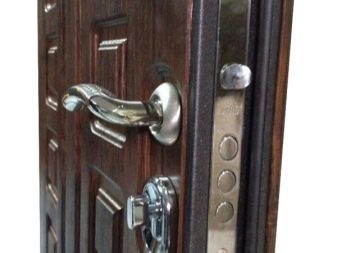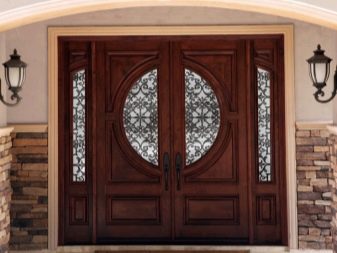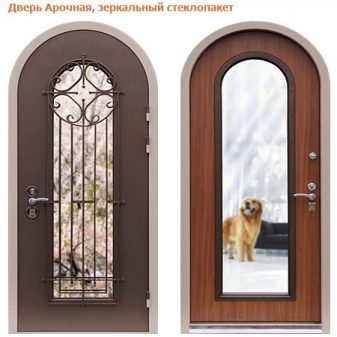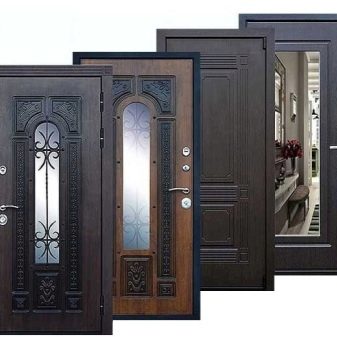Thermal break doors
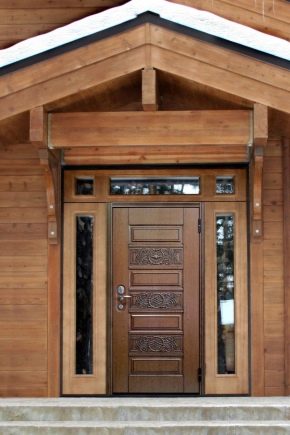
When purchasing an entrance door, we expect reliability, functionality and durability from it, so you should consider the type of room for which it is intended. For example, the usual metal door, which is perfect for an apartment, due to the high thermal conductivity will bring trouble to the owners of private houses in the form of condensate, heat loss. Thermal break technology helps to eliminate this.
What it is?
Thermal break is the separation of a material that conducts heat into two or more parts using insulating material or a layer of dry air plugged in the cavity of the structure.Using this method allows to reduce the heat transfer between the house and the street, thereby reducing energy costs and heat loss. The simplest example is the traditional Russian canopy - an unheated room that prevents a sharp collision of cold and warm air, equalizing the temperature. A more modern variation is a double door, suitable for those who cannot allocate space for a vestibule.
However, such disadvantages of paired structures, such as cumbersome, inconvenience of use (it is necessary to open two doors), loss of usable space, subsidence of the doors and violation of tightness with time led engineers to create doors with thermal break.
Design features
Impressive insulation qualities were achieved by the developers thanks to the observance of a well-known physical rule: the distinction between warm and cold surfaces reduces heat transfer.
There are several key points in the thermal door device:
- two sections of the door framewhose cavity is filled with an insulating material (mineral wool, foam);
- between sections - a layer of material with low thermal conductivity (cork, polyurethane, polyamide);
- multi-layered door leaf. The space between the outer and inner panels is filled with two or more types of insulation, which are insulated with a plastic or wood insert.
The combination of these solutions allows to exclude from the design of the street door the so-called "cold bridges", through which there is a heat leak.
Materials
The quality of thermal doors depends on the materials used by the manufacturer to create it. Practice has shown that the construction of a metal door is more effective in terms of thermal insulation and security than products made from polyvinyl chloride (PVC) or wood. But in this case there is a risk to meet low-quality products made of thin steel. They bribe cheap and low weight, but the strength of these doors is no more than that of a tin can. Therefore, it should be remembered that the reliability of the design is directly proportional to the thickness of the walls of the metal frame. The standard outer sheet thickness is 1.8 mm, but safety experts recommend a minimum thickness of 3 mm.
The interior of the door with a thermal break is filled with various insulating materials. Among the most common:
- PVC - proved to be in production as the most budget material with high insulating properties. Its multi-chamber structure retains cooled air due to air interlayers, preventing heat leakage. The main disadvantage of this filler is low frost resistance. Therefore, it is suitable only for regions with an average temperature in winter not lower than 15C.
Mineral wool - material whose characteristics are ideal for creating thermal doors. Among the main ones:
- Air exchange - eliminates the formation of condensate;
- High burning temperature ensures fire resistance;
- Soundproofing;
- Resistant to atmospheric conditions, including low temperatures;
- Economical.
- Styrofoam - inexpensive type of insulator. The construction on its basis is absolutely impenetrable for both warm and cold air flows. In addition, this door can withstand temperatures below -100C.
- Polyurethane foam - high-strength plastic material with a porous structure,which keeps heat well and serves as a barrier to sound and noise. Such filling gives additional rigidity to the door leaf, increasing its service life.
- Fiberglass It is also a good sealant, but it has one significant drawback: it is believed that when heated it becomes toxic to humans. Therefore, the door with such a filler is often mounted in industrial premises with the ventilation provided.
Despite the obvious advantages of these types of insulating materials, primacy, according to experts and consumers, belongs to the tree. The density of the solid wooden massif provides high tightness, and its environmental safety makes it preferable to use such doors in residential buildings. The only negative is the high cost.
Advantages and disadvantages
Among the advantages of using a thermal door can be identified:
- Preservation of heat in the room, which naturally reduces the cost of heating the house;
- Resistance to weathering. Thermal break minimizes the difference of the temperatures affecting the product. Such doors are not covered with moisture inside and, accordingly, with ice, which prolongs their service life and preserves the aesthetic appearance.
- Suitable for harsh climatic conditions;
- The need for insulation, as well as the arrangement of an additional system of thermoregulation is eliminated;
- High noise and sound insulation;
- Resistance to high pressure and tightness.
So that your purchase does not lose the mentioned advantages, turning them into disadvantages, you need to pay attention to several conditions. When choosing a door you need to carefully check the door leaf. Its surface should be absolutely flat, without dents and holes, without bevels, bends and other deformations. Heavy product design is undoubtedly a plus to safety and reliability, but can shorten the life of the product if conventional fixing elements are used. Therefore, it is necessary to equip with strong hinges, and better with special levers that stably fix the canvas.
Special requirements are imposed on the installation of doors with thermal break. Any undetected damage, bevels, slopes, any error during installation can negate all the insulating benefits. It may well be necessary to additionally buy handles that also have a thermal break function, since ordinary fittings can contribute to heat loss.
If you plan to use a thermal door in a room with high humidity, you must additionally install a system of supply and exhaust ventilation. Otherwise, no magic properties of the door will help to avoid the risk of condensation.
Kinds
The growing number of manufacturers in the market of street doors provides a variety of modifications of structures, their characteristics and combinations of components. Classification by the criterion of "price-quality" identifies models of economy, business and elite class.
For the production of budget options most often used thin metal profiles and finishing of inexpensive materials: leatherette, MDF, lining. The final product is quite warm and light, but is not reliable due to the small thickness.
More expensive specimens have as an exterior laminate that imitates wood. Insulated door looks decent, is inexpensive and resistant to scratches and abrasion.
Elite models, as a rule, are made to order and trimmed with natural materials. Often used high-quality MDF or glued natural veneer. A solid array of oak and other breeds is much more expensive than analogs, but gives chic to products,emphasizing the social status of the owners. The double door is particularly luxurious with such a finish.
Those who do not plan serious expenses, but claim to be solid, will like the metallophile in the finish. This is the processing of metal in a special way (stamping or manual plunge) to give it a three-dimensional pattern.
Dimensions
Knowledge of the basic characteristics inherent in models with thermal insulation will greatly simplify the choice of the consumer. Key points to consider:
- The thickness of the steel sheet. As mentioned above, models with a thickness of 1.5-1.8 to 3 mm have the advantage;
- Door leaf thickness starts from 70 mm and above. It all depends on the “filling” of the door and on the number of layers of noise and heat insulator;
- Typical product sizes most manufacturers vary over wide ranges: from 0.86 to 1 m wide and 2-2.5 m high.
You can also choose double and one and a half models. A variety of choices makes it possible to purchase doors for almost any openings or make them to order;
The average weight of a metal door is about 100 kg. Heavier structures, as a rule, are made to individual orders.A significant influence on the weight affects the thickness of the steel, the presence of a decorative coating, accessories and other details.
Colors and design
The front door is the hallmark of the dwelling that we choose for years. Therefore, it is important to pay attention not only to its functional features, but also to its appearance. Modern technology gives manufacturers virtually unlimited possibilities for the design of street doors and the choice of colors. Consider a few popular options.
If the house lacks airiness and lightness, a white door in the style of Provence will achieve the desired effect. Warmth and festivity will add the color of oak gold. Also relevant is the color of white oak, which allows you to fully enjoy the beauty of the wood pattern. Will never lose the popularity of dark wenge color models. This design looks expensive and elegant, especially in the combination of carvings and delicate patterns.
Making the front door effect of antiquity, or in other words, patina, is another fashionable design trend. This process is completely manual and consists of several stages: priming, sanding, applying patina and varnishing.Manipulations with it allow you to achieve the effect of cracked paint, leather, corduroy and many others. Artificially aged surfaces harmoniously look with forging and give the input product individuality.
The front door with a mirror on the inside is a good design move for small hallways. Besides the fact that such a solution saves space, the mirror surface also visually increases the space.
Doors with glass are more suitable for the private sector. They look stylish and beautiful and are an additional source of light. Despite the seeming unreliability, in practice tempered and heat-resistant glass is used for production, which is quite difficult to damage. In addition, for additional protection, such doors are made with forging. Decorative forged elements will add elegance and elegance to the exterior of any home. Optionally, instead of the usual glass, you can order inserts from stained glass.
Powder door trim is a widespread technology. Coloring is carried out by spraying the powder in an electrostatic field, after which the powder paint is polymerized at a temperature of 140 to 200 degrees.
A large variety of colors, as well as additional effects (silk, crocodile leather, antique, etc.) - this is an open field for designers.
The practical function of this type of finish lies in the protective properties of the coating against mechanical damage and unfriendly external environment.
Manufacturers
Manufacturers of doors with thermal break is an extensive selection of models and finishes. One of them is Torex company. The plant was founded in Saratov and has been operating since 1989. According to customers, one can judge about the high quality of products, service at a decent level and customer care. The most preferred are the models "Bullfinch". They are released in several series for different climatic zones:
- "Snegir 20" - 3 layers of a sealant, a cloth - 76 mm, created for regions with a warm and humid winter with a temperature not lower than -18 C, withstands short-term temperature drops up to -20 / -25C;
- "Snegir 45" - 3 layers of heat-insulating materials, sheet-95 mm, designed for areas with an average temperature of -25 ° C, but retains its properties and up to -40 - -45 ° C;
- "Snegir 60" - 5 layers of insulation and 118 mm of canvas, successfully used in extremely low temperatures (from -45 ° C).
Another popular manufacturer is the Termo factory., offers a wide variety of thermal doors for every taste and wallet. To economical options include the model «Termolight». It has three layers of insulation boxes and four - sheets, width - 85 mm. This model is basic in the Termo collection and is equipped with a mandatory minimum of options for safety and heat preservation. The cost of such a door is about 30 thousand rubles. Next in the line are the models “Termo”, “Termodeca”, “Termo +”, “Termodeca +”, which are distinguished by five thermo-layers, the thickness of the web from 98 to 100 mm, and three seal holders. And finally, super warm products - "Termopan" and "Termowood" with seven layers of thermal insulation. By the way, the company delivers in all regions of Russia and in the CIS.
Thermal samples can be found at firms "Lex". Although their assortment is not so diverse, the quality stated in the description allows us to mention them in this review.
Novosibirsk PO "Pillar" pleases not only with the range, but also attentive attitude to the design. For example, the model “Luigi Termo”, decorated with an inset of glass and forged elements is an excellent choice for a cottage.
In the catalog known in the market company "Argus" not so long ago appeared frost-resistant doors of the Argus-Heat series.
This is not a complete list, which nevertheless gives reason to conclude that the buyer is not limited in the choice of doors with thermal break.
How to choose?
When choosing a door against freezing for a country house, pay attention to the following points:
- consider the climate of the region residence, since the models differ in terms of frost resistance;
- notice the thickness outer steel sheet. Considered optimal parameters of 1.2-2mm;
- inspect the surface for bulges, scratches and other deformations, which will relieve unpleasant surprises in the future. This also applies to the shape of the canvas. The presence of bevels or tilts affects the degree of sealing;
- Take a closer look at the samples with the optional rubber seal. This greatly increases the thermal insulation functions of the structure;
- to avoid freezing, give up the eyes and vertical closing. This also applies to conventional door handles without a thermal break;
- find out what type of insulation It is in the model of your choice, since some species (for example, glass fiber) are toxic to humans and are not recommended for use in residential areas;
- pay attention to the components. Conventional loops for massive (weight can reach 120 kg) thermal doors are categorically not suitable. An acceptable option can be special levers that securely fix the canvas.
- in pursuit of quality you should not lose sight of the exterior finish. Here the choice of works is more than rich in designer's works. However, it must be remembered that the street doors in private houses are in direct contact with the environment, so it is advisable to choose the finish of the outer panel metal.
Having found the perfect door, it is very important to install it as correctly as possible. Any offset will nullify the functionality of the design.
To avoid disappointment, when installing carefully read the enclosed instructions, and better contact the experts, especially since many companies have full-time installers.
From this video you will learn what is inside the door with a thermal break.
